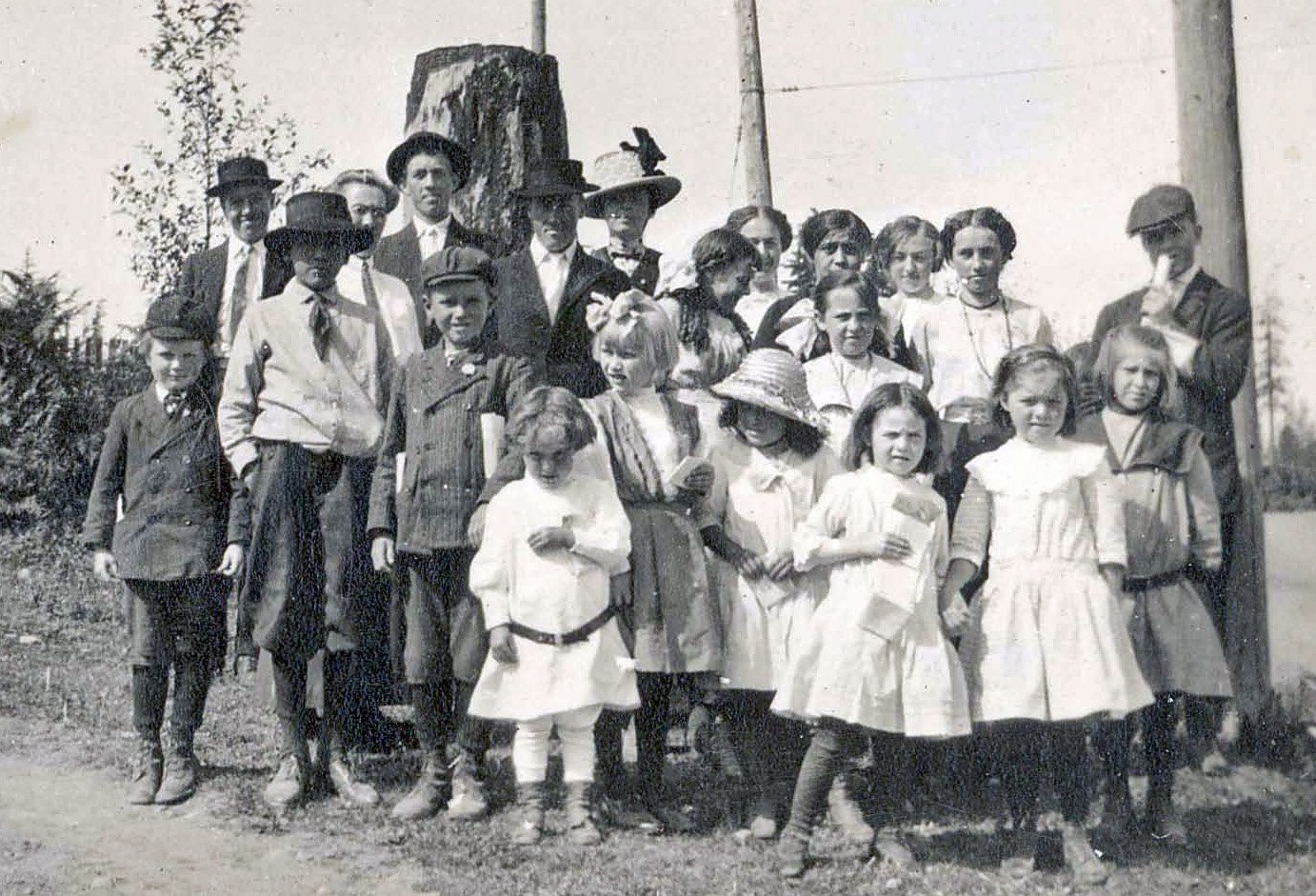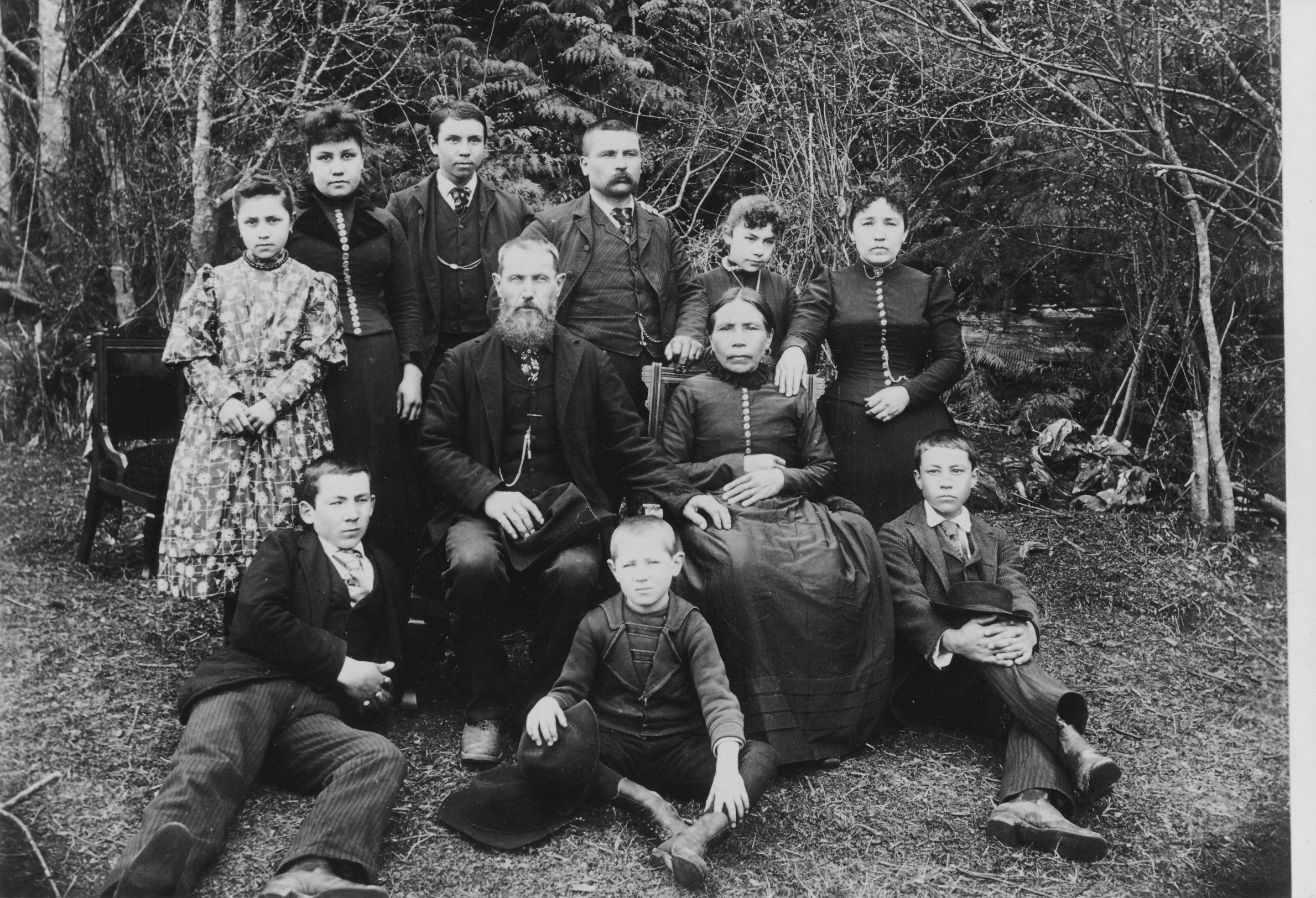
History & Timeline
Click to Explore an Era:

Historic Homesteads
Browse the family histories of several pioneering homesteaders who settled the Swansonville area during Port Ludlow’s early history.
-
In the late 19th century, the town of Port Ludlow sprang to life as a company town under the ownership of the Puget Mill Company. This historical origin mirrors the creation of nearby Port Gamble, Washington.
During its early days, Port Ludlow boasted a well-planned infrastructure that catered to the needs of its employees, providing housing and essential amenities. However, as time progressed, families working at the mill began to set their sights higher, quite literally, as they sought to establish their homesteads further up the hill. Families acquired larger plots of land, giving rise to what is now affectionately known as the "Swansonville" area, where homesteads began to flourish.
Nestled two miles uphill from the bustling Mill, Swansonville swiftly transformed into a close-knit community primarily composed of immigrants from Nordic regions.
As the fortunes of frontier Port Ludlow ebbed and flowed, the local community recognized the need for a new communal gathering space, leading to the genesis of a unique historic destination.
-
On June 18th, 1902, a significant step was taken in the history of Port Ludlow as the Articles of Incorporation of the Christian Congregation of Port Ludlow were officially filed.
Hjalmar Johnson, George H. Bates, and M. G. Anderson were the distinguished trustees who emphasized a core principle: no specific denomination or sect would exercise control over the organization.
Fast forward to November 9th, 1903, when Hans and Helene Swanson made an extraordinary gesture. They deeded a small plot of land to the corporation for the nominal sum of $1, paving the way for the construction of a church.
Between 1903 and 1905, the members of the church demonstrated remarkable dedication by donating materials for the construction. It's been recounted that the lumber, often sourced from the mill's seconds pile, was painstakingly transported up the hill, board by board, in humble wheelbarrows. This remarkable effort resulted in the creation of a cherished landmark, the Swansonville Church.
-
The Swansonville Church held a pivotal role as the epicenter of this rural community's existence. It served as the meeting point where families convened regularly, forging connections and fostering community ties. Sunday School, a cherished tradition, not only imparted religious teachings but also facilitated enduring friendships and even witnessed the formation of numerous marriages.
Beyond its walls, the church's choir extended its influence to neighboring locales, offering melodious accompaniments to local events and somber funerals, lending a heartfelt touch to significant moments in the region's history.
During its early years, the church thrived, boasting a growing congregation. However, the 1930s ushered in challenging times, as the Mill ceased operations, leading to economic downturns in the area.
Despite these adversities, determined community members banded together in smaller groups, striving to preserve the church's heritage. These dedicated efforts ensured that the Swansonville Church's historical significance endured throughout the years.
-
From the 1970s through the 1980s, the Swansonville Church experienced a gradual increase in its congregation.
During this period, the church was graced by the presence of a revered figure known simply as Pastor Corey, a traveling pastor from Sequim. His deep connection with the community earned him widespread love and respect. Pastor Corey played an integral role in the region, becoming a fixture at some of the most significant events in the community, including weddings, funerals, and various family occasions.
As the years went by, the church building began to show signs of wear and tear, and its usage declined. The facility had limited electrical infrastructure and had never been equipped with plumbing.
By the 1990s, the Swansonville Church had to close its doors to the community due to its deteriorating condition and underutilization. It remained vacant for nearly three decades until 2019.
-
The year 2019 marked a pivotal turning point for Swansonville as the "Friends of Swansonville" came into existence. This dedicated group formed with a dual purpose: to address the deteriorating state of the church building and to embark on a mission to archive and catalogue the rich local history.
Since its inception in 2019, the Friends of Swansonville have made remarkable strides. They have successfully established ownership of the historic building, securing its place as a treasured community asset. In recognition of its historical significance, the church has been granted official historical designation status.
In addition, a dynamic initiative has been set into motion, aiming to breathe new life into the building. The goal is not only to restore the church but also to create an engaging in-person and digital museum that vividly narrates the captivating history of Swansonville.
The journey of restoration is ongoing and is expected to continue for many years to come. The Friends of Swansonville invite you to be a part of this remarkable endeavor, preserving the past and shaping the future of this cherished community landmark. Join us in these efforts, and together, we'll write the next chapter in Swansonville's history.






